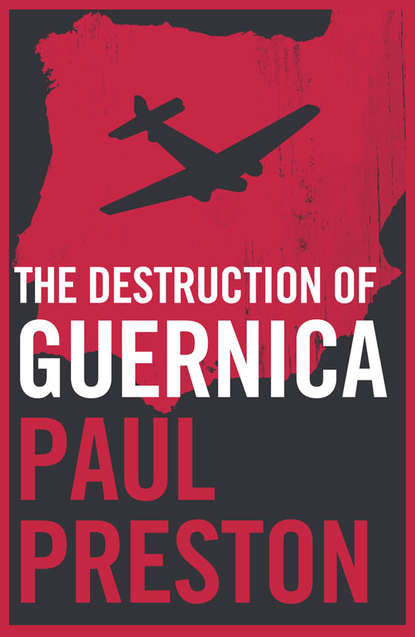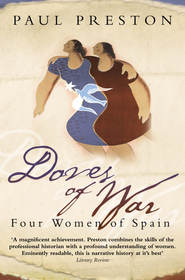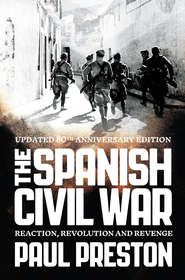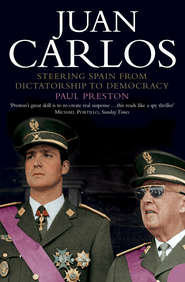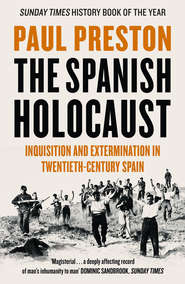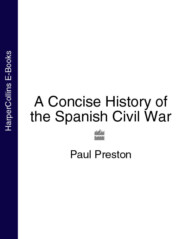По всем вопросам обращайтесь на: info@litportal.ru
(©) 2003-2024.
✖
The Destruction of Guernica
Настройки чтения
Размер шрифта
Высота строк
Поля
In expecting the entire north of Spain to fall in under three weeks, Franco and Mola had underestimated the determination of the Basques. They were both disconcerted by the slowness of the first stage of their advance towards Bilbao’s unfinished ‘iron ring’ of fortifications. By 8 April, the rebel forces had completed only the first part of their planned offensive. After intense bombing on 4 April, they occupied the village of Otxandio (where the Basques had temporarily established their field headquarters) and the heights to the north, which they had intended to do on the first day. Steep, wooded hills, poor roads and heavy rain and fog had held up the advance of General Solchaga’s troops. Franco visited the front, ostensibly to witness the triumph, but in fact to resolve the differences between Mola and Sperrle.
While he was in the north, Mola announced that it would be necessary ‘to destroy systematically the war industries of the province of Vizcaya. To this effect, on 9 April we will begin the complete destruction of the power station at Burceña, the steelworks of Euskalduna and the explosives factory of Galdácano.’ It seems that Franco had given permission for the partial implementation of the order signed by Mola on 2 April.
The dogged Basque retreat continued to exact a high price from the attacking forces but the terror provoked by artillery and aerial bombardment and political divisions within the Republican ranks ensured the gradual collapse of Basque resistance.
In the early days of the Basque offensive, on the evening of 4 April, Franco received the Italian Ambassador Cantalupo and explained with surprising candour the philosophy of his war effort: ‘Ambassador, Franco does not make war on Spain but is merely carrying out the liberation of Spain … I must not exterminate an enemy nor destroy cities, nor fields, nor industries nor production. That is why I cannot hurry.’
Franco had no doubts that the ‘liberation’ of his ‘Spain’ signified, as his actions showed, the thorough-going repression of all liberal and leftist elements. However, his remarks suggest that he doubted the wisdom of Mola’s manic determination to annihilate Basque industry on which Sperrle had consulted him. The differences between Franco and Mola over the appropriate targets in the northern campaign do not indicate humanitarian preoccupations on the part of the Generalísimo. For Franco, ‘Spain’ had an entirely partisan meaning. He was reluctant to damage the material interests of his ‘Spain’ and that included the Basque industrial base, arms factories and mineral wealth.
Franco explained to Cantalupo the destruction of Durango four days previously by aircraft of the Condor Legion flying at his orders. ‘Others might think that when my aircraft bomb red cities I am making a war like any other, but that is not so. My generals and I are Spaniards and we suffer in fulfilling the duty which the Patria has assigned to us but we must go on fulfilling it.’
Nevertheless, Franco was perplexed by the sluggish progress of the campaign in the north. Sperrle and Richthofen were also frustrated with the slowness of the advance. Since the beginning of the campaign, Richthofen had experimented with terror bombing to break the morale of the civilian population and to destroy road communications where they passed through population centres. This tactic had begun with the destruction of Durango on 31 March and been followed up by the attack on Otxandio. When he told Cantalupo that, in bombing Republican towns, he and his generals were merely fulfilling their patriotic duty, Franco was admitting that he approved of such terror bombing. How fully Franco understood the military theory behind German strategy is another matter. On 12 April, Franco disconcerted Sperrle by requesting that he send him all the aircraft that he was not using in the north to be used around Madrid. Under orders from Berlin not to split his forces, Sperrle offered to leave the Basque campaign and transfer the entire Condor Legion to central Spain. Only after Colonel von Funck, the German military attaché in Salamanca, had laboriously explained to him the strategic thinking behind the German operation did Franco refuse the offer and order Sperrle to remain in the north.
The episode reveals not only the limitations of the Generalísimo’s strategic vision, but also that Sperrle was still directly responsible to him.
On 20 April, the rebels began the second phase of their offensive and German air support was to play an even more crucial role. Sperrle, Richthofen, Mola and Vigón were sufficiently frustrated by the slowness of the advance to talk again of reducing Bilbao to ‘debris and ash’.
In the event, the great morale-destroying blow would fall not on the Basque capital but on another smaller, more manageable but equally significant target. By 24 April, after merciless air bombardment and artillery pounding, the Basque forces were falling back in some disarray.
In the course of 25 April, as indeed throughout the entire campaign, Richthofen and Vigón were in constant contact by telephone coordinating aircraft, artillery and infantry. They agreed on the need to try to bottle up the retreating Basques around Guernica and Marquina. In the evening of 25 April, Richthofen again telephoned Vigón and arranged to see him at 7 a.m. the following morning. He wrote in his diary ‘units ready for tomorrow’.
On the night of 25 April, presumably on Mola’s instructions, the rebel radio at Salamanca broadcast the following warning to the Basque people: ‘Franco is about to deliver a mighty blow against which all resistance is useless. Basques! Surrender now and your lives will be spared’.
Richthofen and Vigón talked again at 6 a.m. on Monday 26 April and then met, as arranged, at 7 a.m. After close consulation with Vigón, Richthofen organised a series of bombing attacks aimed at impeding the retreat of the Basque forces. He seems to have decided to combine the tactical objective of blocking the retreat south of Guernica near Marquina with the broader strategic coup of the devastating blow to which Mola’s broadcast had referred. Richthofen wrote in his diary of an implacable attack on the roads, bridge and suburbs of Guernica. ‘There things must be closed up, it is necessary to secure finally a triumph over enemy personnel and material.’
Franco had made sufficient comments since 18 July 1936 about his belief that the Civil War would be won on morale for him to have few objections. If he had disapproved of what happened at Durango, Otxandio and other villages, he had had ample time to put a stop to Richthofen’s programme. His remarks to Cantalupo, in fact, make it clear that he approved and indeed took pride in what was happening.
From 4.40 to 7.45 in the late afternoon and early evening of 26 April, which was market day in the small town of Guernica, a blow consistent with Mola’s threat was struck. With the normal population joined by refugees and peasants coming in for the market, there were at least ten thousand people in Guernica on that day. The military authorities had tried to suspend the market because of the war but many peasants from surrounding hamlets had arrived as usual. Moreover, large numbers of people had come from Bilbao in the hope of being able to buy food at the market. The town had no anti-aircraft defences. It was annihilated in three hours of sustained bomb attacks by aircraft of the Condor Legion and the Italian Aviazzione Legionaria under the overall command of Richthofen. The raid was carried out by the following aircraft: twenty-three Junkers Ju 52 trimotor bombers, four new He 111 twin-engine bombers, ten Heinkel He 51 biplane fighters, three Savoia-Marchetti S.81 Pipistrello trimotor bombers and one Dornier Do 17 twin-engine bomber, escorted by twelve Fiat C.R.32 biplane fighters and possibly six of the first ever Messerschmitt Bf109 fighters.
It was an operation on a scale that could hardly have been organised by the Germans behind the backs of the Spanish staff with whom there was, in any case, constant liaison. Terrified civilians who fled into the surrounding fields were strafed by the machine-guns of Heinkel He 51s in order to force them back into the centre of the town. The number of victims will never be known for certain because of the chaos and the fact that the rebels had captured the town before the debris was cleared.
Nevertheless, the horror undergone by those in Guernica on that market day can be gathered from the eyewitness account of Father Alberto Onaindía.
It was Monday and market day. We were passing near the railroad station when we heard a bomb explosion; it was followed immediately by two others. An airplane which was flying very low dropped its load and left, all in a few seconds. It was Guernica’s first war experience. The panic of the first moments shocked the inhabitants and the peasants come in to market. We observed a considerable excitement. We got out of the automobile and tried to find out what was happening and to calm the many women who were growing more nervous and excited. Minutes later other bombs fell near the Convent of the Madres Mercedarias and the people began to leave the streets and to hide in cellars and under shelters. There very soon appeared, as if coming from the sea, some eight heavy planes which dropped many bombs and behind them followed a veritable rain of incendiary bombs. For more than three hours there followed waves of bombers, of aeroplanes with incendiary bombs and of solitary machines which came down to two hundred metres to machine-gun the poor people who fled in fright. I did not know the mark of the aeroplanes, because I do not understand about such things.
For a long time we were at the exit of the town towards Munitibar and Marquina. The explosion of the bombs, the fires which were beginning to break out and the harassment of the machine-gunning planes forced us to take cover under trees, under house entrances, dropping to the ground in the field when we saw a plane approaching. There was no anti-aircraft defence, no defence of any kind, we were encircled and corralled by diabolic forces in pursuit of defenseless inhabitants. Through the streets wandered the animals brought to market, donkeys, pigs, chickens. In the midst of that conflagration we saw people who fled screaming, praying, or gesticulating against the attackers. We finally left the burning town, but when we saw approaching aeroplanes which would pass over us, we left the automobile and ran to hide under some trees. We sought the protection of a small stone bridge over a nearby stream, while a few metres away three bombs exploded raising a cloud of blinding dust. Someone left the highway and climbed into the wood. When calm returned, we found a woman dead, machine-gunned, and a young gudari
Вы ознакомились с фрагментом книги.
Приобретайте полный текст книги у нашего партнера:
Приобретайте полный текст книги у нашего партнера:





